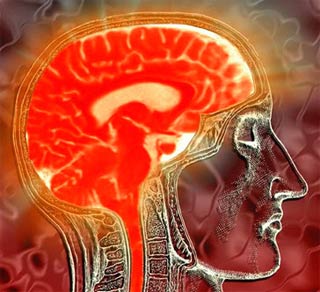Newly sensitive magnetic sensors allow for easier brain research
American physicists have developed a very handy device with enough sensitivity to record magnetic fields from electrical signals in the brain. With a small cell covered by rubidium vapor (Rb) clusters, the sensor can record magnetic fields as small as 70 fT (10-15 T), meaning a billion times smaller than the word Earth field. (According to a recent study published in Nature Photonics 1, 649 - 652 (2007)).
Although the value of 70 fT is still not the best sensitivity compared to a magnetometer using Superconducting Quantum Interference Device (SQUID - Superconducting Quantum Interference Device), the change from small to 3 fT can be recorded. But it is important that this new sensor operates at room temperature. This is the outstanding strength of this sensor compared to the SQUID magnetometer, which can only operate when cooled to very low temperatures (even near absolute zero) to achieve the above sensitivity - and making it difficult to use and very expensive.

With the new sensor, the brain map can be drawn by recording the electrical signal of the brain (Photo: VatlyVietNam).
John Kitching's team and colleagues at the US Institute of Standards and Technology (NIST), in Boulder, Colorado have successfully built this new sensor.The sensor contains a 6mm 3 small cell covered with alkali metal gases (eg Rubidium), which is very sensitive to small changes of magnetic fields .
When a circular polarized laser light passes through the cell, most are transmitted if the spins of the Rubidium atoms are all pointing in the same direction. But if the sample is placed near the cell, its magnetic field causes the spins to no longer orient in the same direction and so the laser light is absorbed by the atom. The amount of absorbed light depends on the magnetic field strength.
However, in order to become a handy system, the cell must be encased in miniature optical devices and a light sensor. However, this mechanism does not require low-temperature devices like the SQUID magnetometer, it can even operate on its own and can be deployed for remote control areas. for example, at the airport, when receiving magnetic fields from metal objects such as bombs, mines .
An immediate deployment application is to graph the electrical signal produced by the brain without action, even the signals coming from the heart of the unborn baby. In fact, NIST's team has also used this device to record magnetic fields from a mouse's heart, and they hope to improve the device's sensitivity by up to 10 fT, possibly for Better implementation of brain research functions.
The Doctrine of Independence
- Are we only using 10% of the brain?
- Detect sensitive areas of love
- Ultra-fast pollutant detector
- Shield of cracked magnetic field, Earth attacked by cosmic rays
- The smell will be more sympathetic
- Close-up of the human brain is 'sliced' newly announced
- Drug addiction also carries genetic factors
- The strange hat measured from the field in the human brain
- The world's smallest magnetic memory
- Microelectronic sensor on dental diagnosis
- Ultra-sensitive sensors - prospects for artificial skin
- China developed the world's most sensitive submarine detector?
 Daily use inventions come from universities
Daily use inventions come from universities Special weight loss device helps prevent appetite
Special weight loss device helps prevent appetite 8 inventors were killed by their own inventions
8 inventors were killed by their own inventions Iran invented a motor car powered by water
Iran invented a motor car powered by water The strongest magnetic field in the universe may be right here on Earth.
The strongest magnetic field in the universe may be right here on Earth.  Scientists discover how desert ants navigate
Scientists discover how desert ants navigate  First discovery of life-preserving magnetosphere outside the Solar System
First discovery of life-preserving magnetosphere outside the Solar System  Hong Kong researchers have created a soft robot that can penetrate the human body.
Hong Kong researchers have created a soft robot that can penetrate the human body.  The mystery of the origin of magnetic fields in the universe
The mystery of the origin of magnetic fields in the universe  Life on Mars may have evolved more than we thought
Life on Mars may have evolved more than we thought 